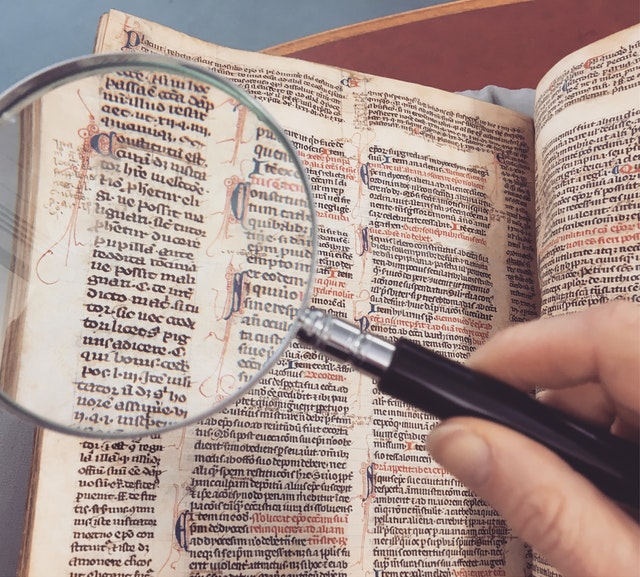How Do You Find Out About Your Family History?
July 4, 2022
You have decided to explore your family history, and are ready to dive in, but you are not quite sure how to get started.
You’ve heard various family stories passed down from older generations, but you don’t know which stories are factual or which are exaggerated versions of the truth.
You also have a pile of random genealogy documents that were given to you by a family member, yet you are unsure what do to with them and how to incorporate them into your research.
Examining your family history can be a lot of fun, and extremely rewarding. If you are not prepared, though, it can also be very frustrating and exhausting.
To help you get started on your genealogical journey, we have come up with 10 great steps.
Step 1: Get organized
This may seem like an obvious first step, but it is imperative that you start by figuring out how you are going to organize yourself.
If you are planning on combining online research with in-person research, chances are you are going to have a lot of different pieces of your genealogical puzzle floating around (both physically and online).
If you are “old school” and like to have physical copies of all of your documents, maybe an old fashioned filing cabinet is the best way to go. A file folder for each family member may be the best way to keep all of your documents organized and easily accessible.
However, if a lot of your research is being done online, you may find it a bit inconvenient (not to mention expensive) to print out every interesting document you come across. Plus, if you are planning to go back many generations, you could easily have 600+ family members to keep track of.
Keeping a physical file on each of them may not be realistic. In that case, you may want to consider using folders on your computer desktop, and scanning in any physical documents you have.
Step 2: Zero in on what you want to research
Do you want to know as much information as you can find for every branch of your family tree? Or are you more interested in tracing your direct male lineage on your father’s side? Whatever your plan may be, it’s important to identify exactly what your research goals are.

Zeroing in on exactly what you are hoping to find and coming up with a research goal is going to help give you direction (and keep you from getting overwhelmed). Identifying these things early on can also help save you hours of valuable research time.
And once you have decided where you want your focus to be, stick with it and do not be tempted to multi-task on other areas of your family tree.
This is not to say that you can’t return to other parts of lineage at a later time. But, by focusing your research on one section at a time, you will save yourself from potential confusion and frustration.
Step 3: Start with what you know about your family history.
Now that you have decided on how you are going to organize yourself and what you want to focus on, you are ready to get started on the actual research.
The best place to start is with what you already know.
Start with your own name, date and place of birth, and any other vital information. Then add in your parents, your siblings, your grandparents, etc.. Once you get all of the information down that you already know, you will be able to easily identify any gaps where you are missing information.
Also, by starting with the information that you are already sure of, you will be able to more easily see if the branch of family you are researching is actually YOUR branch of the family.
As unique as you may think your name is, chances are high that your family is not the only family with your last name. If you start researching John Smith in Texas, you are going to get tons of results (most of which are probably not going to be the John Smith in your family).
However, if you know that you are searching for John Smith who was born on June 5th, 1895 in Giddings, Texas, you are more likely to get results that pertain to the correct John Smith.
Step 4: Talk to your family members
While you may have a lot of knowledge pertaining to your family history, it is likely that there are things that you don’t know. However, you may have a family member who can help fill in the blanks.
Taking the time to sit down with your parents, grandparents, aunts, uncles, cousins, etc. can provide you with a wealth of information.
Start by asking them the basics: What is their full name? When and where were they born? What were their parents’ names, and where were they born?
Any information that they can give you can prove to be incredibly helpful when you are trying to puzzle together bits of your family tree.

Knowing where your great grandparents were married, or when they lived in a particular city, can give you clues as to what kind of documents you should look for, and where they may be located.
And while hearing family stories can be an exciting way to motivate you to do your research, if you pay close attention, you can also frequently find important clues in those stories. Tweet this
If your grandmother is telling you about her great-grandparents who immigrated from Ireland in the mid-1800’s, that might clue you in to their reasons for coming to America. (In the mid-1800’s Ireland experienced a terrible famine, which caused nearly a million Irish people to immigrate to America).
Or, if you find out that your great-grandfather died when your grandfather was a young boy and your great-grandmother re-married soon after, you may discover that great-grandmother’s new husband adopted her children and changed their last name.
Just be sure to take notes (or record!) when talking to family members, so that you have something to look back on at a later time.
And if you need some ideas for questions to ask, check out our great guide to family history interviews.
Step 5: Choose an online genealogy site
Genealogical research can be done without the help of sites such as Ancestry and MyHeritage. To be honest, though, these sites just make it so much easier.
For starters, they allow you to build an online family tree, which is an incredibly helpful tool for keeping track of family relations. They are also great resources for doing the research itself.
There are a lot of genealogy/family tree sites out there, so you will want to do your homework and figure out which one works best for your particular needs. Some of my personal favorites are:
- Ancestry
- FamilySearch
- MyHeritage
- Archives
A lot of these sites do require a paid membership, so be sure to pay attention to the fine print when making your choice.
Some are more expensive than others, but forking out the additional money may be worth it, depending on your needs.
Ancestry, for example, tends to run a bit higher than some others, but their site is incredibly user-friendly and contains a wealth of information. Their family tree tool also allows you to store facts and documents for each individual member, which is invaluable when working with a large family tree.
If paying a monthly fee does not work for you, though, be sure to check out FamilySearch. They have a vast collection of records from all over the world, and will even allow you a free membership where you can build a basic family tree.
Once you have decided on a site to use, start plugging in the information that you already know. Once you have built out your initial family tree, you can use the site to help organize the documents you find.
Step 6: Analyze and cross-check your facts
As great as genealogy sites are, the reality is that (for many of them) any Tom, Dick, or Harry can input information. This is why it is extremely important to analyze facts that you come across, and cross-check those facts with other information you have.
For example, if you get an Ancestry hint that tells you that your great-grandmother was married in 1930, be sure to look for an actual marriage certificate or record that can confirm that fact.

Also, you should keep in mind that many of the records out there are not always 100% accurate. Things such as old census records and ship manifests can contain some great information, but because they were generally handwritten by the person taking the record, they are susceptible to human error.
I have personally spent hours trying to find a family on a census record, only to eventually locate them recorded under a completely different last name.
It turned out that the handwriting of the census taker was not the greatest, so when the record was entered into the database, the person doing the data entry mis-read the last name and entered them incorrectly.
It is also important to remember that when your ancestors first immigrated to America, people were not so particular about the way their name was spelled. One day it might be John Smith, and the next it might appear as Jon Smithe.
Depending on the country of origin, many immigrants also had multiple first, middle, and last names. Some documents may show their full names, while others may have any combination of first and last names or shortened versions of the name.
For example, a ship manifest may show the immigration of Johann Heinrich Ludwig Schmidt, while the census later that year may have the same person listed as Joe Henry Smith. It may not be until you compare the two documents and see that each has a family of 5 with a wife named Marguerite, and children named Peter, Maria, and George (whose ages match), that you will realize they are one in the same.
For this reason, these kinds of records should be used as tools to find the clues you are looking for, and not as factual documents.
Step 7: Identify other possible resources
While genealogy sites are a great resource, they are not the only places to find information. Some other great resources for genealogical research are:
- Census records
- Ship manifests
- Obituaries and wills
- Land and tax records
- Old newspapers
- Family bibles
- Old journals
Many of these things are available online, and can be found by doing a simple Google search.
As you dive deeper into your family history, though, you may find that at some point you will hit a brick wall in your research. While genealogy sites are constantly updating their database, there are some records that are simply not available online.
Depending on where your ancestors lived, the records that you are looking for may be located in a variety of different places. The first trick is figuring out where those records may be. This is where some general knowledge of history comes in handy.
If you know the ancestor you are looking for immigrated from Germany in the 1800’s, you will need to understand the fact that Germany did not become a unified state until 1871. So, depending on the area that they lived in, the records you are seeking may or may not actually be located in what is now known as Germany.
Even if it turns out they are located in Germany, you will need to do some research to determine if they are housed in the state archives, a civil registration office, or possibly even in the storage room of the local Parish.
And although some records may be available on an online database, many of them can only be located by physically traveling to the locations and searching through the records there. This is where difficulties such as language barriers can come into play, which bring us to our next step…
Step 8: Consider hiring a professional
At some point in your research, you may come to the realization that your project is just too big for you to handle on your own.
It may be that you just don’t have the time needed to do the research, or maybe you have exhausted all of the resources you have online and need someone who can physically travel to a research site to look for the missing information.
Whatever your reason may be, hiring a professional genealogist can be a great way to solve the mysteries of who your ancestors were.

While there are a variety of reasons why hiring a professional genealogist can be a good idea, here are some of the top reasons:
They understand the records:
Because genealogists spend their days sorting through a wide variety of records, they have the ability and knowledge to easily read those records and quickly find the information they are looking for.
They will also know of where certain records reside, and will likely even have resources that you never knew existed.
They have access to more resources:
People who live and breathe genealogy generally have memberships to various genealogical societies, as well as access to many different genealogy sites and resources.
Hiring someone who has a plethora of tools at their disposal will ensure that they will be able to find information that you cannot find on your own.
Professional genealogist also frequently network with other genealogists around the world, and can use those contacts to help them access documents from across the globe.
They are professional skeptics:
As exciting as it is to have a family lore passed down from generation to generation, professional genealogists understand that family legends do not necessarily equate to reality.
Genealogists are trained to be skeptical of things, and to search out facts. And when one “fact” is found, genealogists know how to check and double-check to make sure that what they found really is accurate.
They are experts at research:

When it comes down to it, tracing genealogy really is just a huge research project. And who better for the job than professional researchers?
Genealogists not only know how to find the documents they are looking for, but are skilled at doing the kind of in-depth research needed to find the needle in the haystack.
They moonlight as historians:
Most good genealogists are also highly knowledgeable historians. They have a vast understanding of history around the world, and use that knowledge to assist in their research.
Remember my example about knowing that Germany did not become a unified state until 1871? That is the kind of information that a genealogist readily knows, and can use in their quest to trace your family’s roots.
They have the time:
Let’s face it; genealogical research is an extremely time-consuming pursuit. Hiring someone who can devote hours a day to your project will get you results much quicker than if you try to do bits and pieces yourself, whenever you have a spare minute.
Step 9: Decide what to do with the information you find
Once you have decided what you want to focus your research on, and how you are going to go about getting the information, you need to figure out what you want to do with your end results.
Is this project just a quest to answer your own questions about your ancestry? Or are you hoping to be able to share your findings with the rest of your family?
There is no right or wrong answer when it comes to your family history. If you don’t have any close family and really just want this information for your own knowledge, then a simple family history report may suffice.
If you have a large extended family, though, you may decide that you want to somehow share your findings with them.
Step 10: Share your findings
The possibilities are endless when it comes to sharing your genealogy results. How you do it just depends on what you visualize for yourself. Some common ways of sharing results include:
- Family tree diagrams
- Family history books
- Research reports
- Power-point presentations
- Online genealogy sites
No matter what you decide to focus your research on, and how you ultimately share your findings, you are sure to find that making the decision to trace your family history will be an eye-opening and rewarding adventure!































